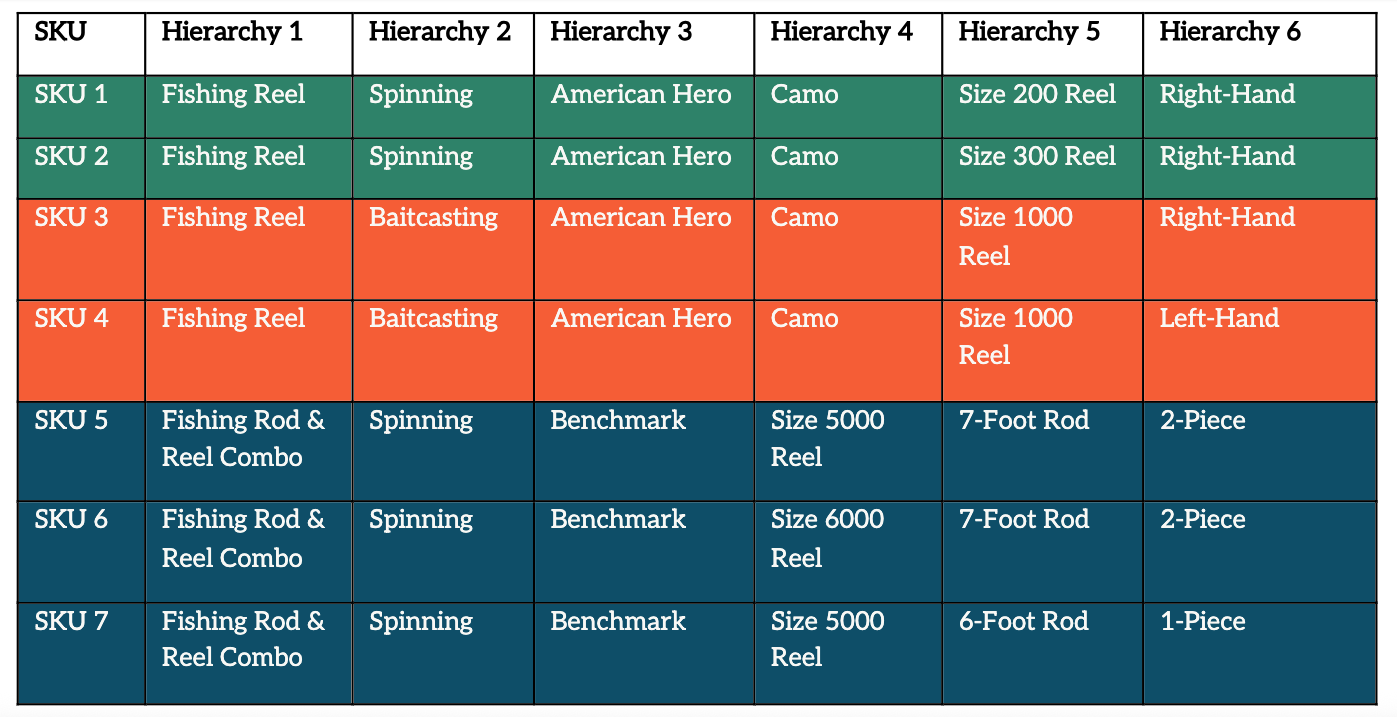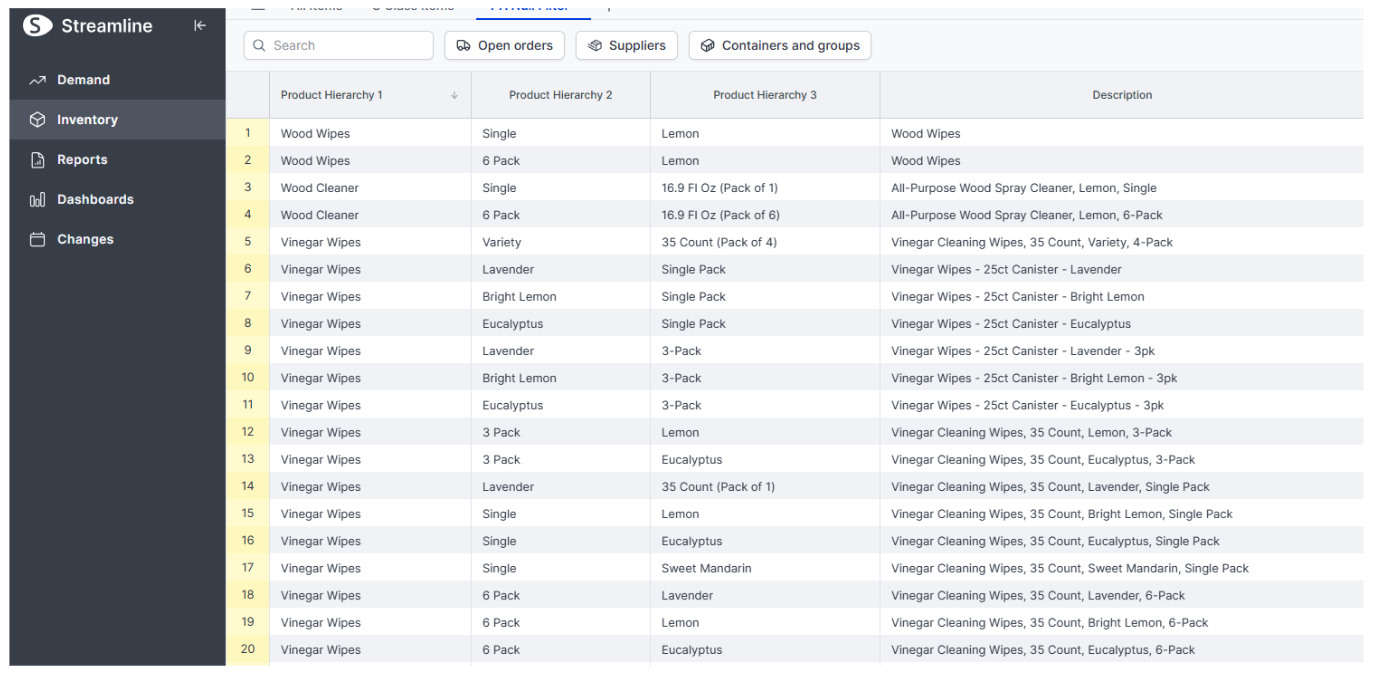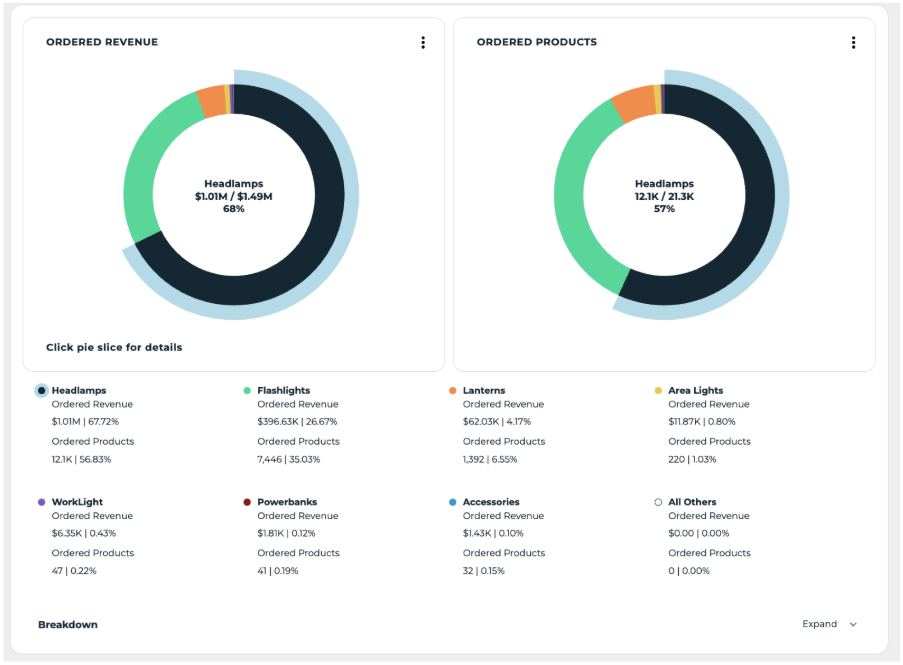Article
Catalog Product Hierarchy & Data for Efficient Cross-Departmental Communication
When people talk about ecommerce growth, they often focus on traffic, conversions, and creative. But what if your most underutilized asset is your product catalog structure?
At the heart of every streamlined ecommerce operation is a clean, well-structured product hierarchy — a consistent way of organizing your products, from broad categories to specific variations (such as color and size). Done right, it’s more than just backend data; it becomes a powerful alignment tool across your entire organization, impacting marketing, content, logistics & inventory forecasting, sales, and agency collaboration.
Our catalog manager works very closely with every client’s catalog that we onboard. It is quite rare to receive a catalog upfront in a state where products are already well organized and easily understood.
At Brandwoven, organizing and understanding your product data is a vital part of our process to kick off the successful management of your brand and the execution of each different service we provide.
What is a Product Hierarchy?
Product hierarchy is a system used to classify all of your products from the most general to the most specific level. It helps teams and tools understand exactly what each product is, and how it differs from others in the same product line.
This structure not only makes your catalog easier to manage, but it also powers smarter decisions across your business.
Best Practices for Structuring Product Hierarchy
When building out an effective product hierarchy, it’s best to think broad to specific: start with the category, then type/ model, and then additional variants like size or color, or whichever variant is the most unique.
Note you do not need to include every product difference in your hierarchy, just the most relevant to understanding the main similarities and differences. You should ideally be storing those other, more nuanced details (in addition to the hierarchy) in their own product data column to be able to assess product specs even further down as needed.
It is equally important to maintain consistent naming conventions for your product hierarchies. Take a new product launch for example – if you are only looking at the new items and setting a product hierarchy for them, you may miss an important opportunity to assess whether they should be grouped into an existing hierarchy or variation, and may waste valuable time creating new hierarchies, copy, or images that are unique when you could have taken those new products and sorted them into an existing catalog. Even a simple difference in hierarchies, such as the plural form of the word, can quickly derail data integrity and lead to products getting filtered out in content, campaigns, and sales performance reporting.
For example, the three products below could accidentally get grouped into three separate campaigns or variations if filtering to one hierarchy first or if your team is using a formulaic title generator. This could cause inconsistencies in child titles because hierarchy 1 had three different naming conventions for the same product type.
Basic Title Formula
[Brand] + [Model Name] + [Type] + [Number of Pieces] + [Size]
- Title 1: Quantum Benchmark Spinning Fishing Rod & Reel Combo, 2-Piece 7-Foot Rod, Size 5000 Reel
- Title 2: Quantum Benchmark Spinning Fishing Rod & Reel Combos, 2-Piece 7-Foot Rod, Size 6000 Reel
- Title 3: Quantum Benchmark Spinning Fishing Rod and Reel Combos, 1-Piece 6-Foot Rod, Size 6000 Reel
Mistakes can and will still happen inevitably, so it’s necessary to audit those hierarchies regularly to help avoid those inconsistencies and make sure each team is set up for success.
As product lines evolve, make sure to revisit the hierarchy to keep it clean and communicate any changes to the necessary teams.
How We Manage Disorganized Catalog Data at Brandwoven
Below is our process for addressing disorganized product data:
- Collect existing product data and seasonal trends from our clients upfront
- Review data integrity & consistency
- Ask clarifying questions
- Revise inconsistencies
- Build out a clean & organized product hierarchy
- Store that information in our PIM
- Distribute that information to different service teams
- Generate quick, efficient, and effective content based off product data
- Audit product data regularly and compare new product launches and data to existing product hierarchies to slot into existing organizational structure
Why Product Hierarchy Should Matter to Your Whole Team
Creative Product Content Generation
Product images and titles are some of the first things a buyer will notice, so it is important to make a great first impression with your content. Use clear main images and titles that capture attention and increase your click-through-rates.
In order to create this content, your creative and copy production teams need clear direction and to understand the similarities and differences between product lines. Clear hierarchies drive clarity and consistency in the content they are generating and become more efficient in their output using structured rules and minimizing revisions.
When five features are the same and only two are different, generating content like titles, bullet points, and A+ Content comparison charts can be generated formulaically. If your internal teams generating this content can’t clearly distinguish what those differences are between products, how will you expect consumers to do so?
Marketing & Campaign Planning
Product hierarchy benefits to marketing & campaign planning:
- Whether you have a seasonal product or location-based promotional calendar, a clean product hierarchy helps your marketing team filter and group SKUs quickly to plan for relevant and targeted campaigns.
- Distinguish between different customer segments where your marketing teams can quickly identify whether to target or upsell value-focused customers vs premium quality shoppers.
- With an organized catalog and clear strategy, your advertising specialists can efficiently sort by product line to run a series or product-specific campaign with clear tagging for sales performance reporting.
- Speed up go-to-market strategy and campaign creation for new planned products to get them in the hands of the consumer faster.
Example: If your hierarchy levels reflect a basic series vs pro-level series of fitness gear, this can be quickly identified and used to alter campaign language based on your plan to target beginners or professionals using tailored SEO terms (eg: lightweight resistance bands vs kettlebells or agility ladders).
Logistics & Inventory Forecasting
Product hierarchy benefits to logistics & inventory forecasting:
- Operations, logistics, and inventory forecasting teams need to know what differentiates one SKU from another (model, size, color, variant) to provide the most accurate forecasts.
- Helps with both granular variant-level forecasting and flexible aggregate-level forecasting by category or series – especially when product attributes drive either seasonal or regional sales differences.
- Apply historical sales insights to new products of a similar type/variant to forecast & plan for expected inventory levels in advance.
- Improves cross-departmental alignment and communication; for example, when your brand manager or marketing team initiates a campaign for a specific product series, they can reference the established series name in the hierarchy when discussing it with your operations team. The demand planner can then immediately identify the impacted SKUs and take appropriate actions (such as increasing safety stock or adjusting replenishment timing) without needing to manually cross-reference individual products.
Performance Reporting & Sales Insights
With a structured hierarchy, sales and performance data can be grouped and analyzed in meaningful ways, allowing cross-departmental teams and tools to have seamless communication using the same language and product groupings. This leads to insightful data and purpose-driven actions.
Whether it’s digging into which color or size performs best, or which product type is underperforming, having consistent data – down to the unique variant – is crucial.
At Brandwoven, we utilize a proprietary sales performance reporting dashboard called Scout to align product hierarchies with KPIs for deeper insights. This allows for communication of consistent data to key stakeholders and clients.
Leveraging Product Hierarchies in Preparation for Prime Day
Pre-Prime Day Preparation
Our process for preparing brand catalogs ahead of tentpole events like Prime Day:
- Audited PDPs for content accuracy and readiness based on targeted & organized groups of products
- Quickly generated new assets aligned with running promotions by understanding the differences and commonalities of products within a certain product line
- Efficiently plan for & set-up targeted promotional campaigns by model, color, or other groupings to leverage appropriate SKU-level budgets
- Forecasted & built up a safety stock on both aggregated product groups and individual products well in advance to ensure brands prepared proper inventory levels for the longest Prime Day promotional period in history
- Pulled Prime Day sales data from previous year(s) organized by targeted product type in preparation to complete year-over-year analyses and performance report decks
Post-Prime Day Analysis
Our process for analyzing brand performance post-Prime Day using product hierarchies:
- Quickly filter product type/set that promotions/deals/coupons were run for to analyze data and report sales performance to stakeholders. Questions we considered were:
- Did traffic to one variation drive sales to another?
- Was there any cannibalization of sales to any related products?
- Identify which product types benefited most from additional ad spend, coupons, price discounts, best deals etc.
What Happens When Catalog Data is Messy or Inconsistent?
Disorganized product hierarchies lead to:
- Redundant or inconsistent product naming
- Confusion between similar SKUs
- Slower planning & launch timelines for campaigns, KPI analysis, and product content generation
- Manual data cleanup and rework
If your catalog is hard to explain, it will be hard to scale.
Conclusion
While it may seem like just a backend task, investing in product hierarchy pays off across departments. It speeds up onboarding, improves campaign agility, and reduces confusion between internal and external teams. Most importantly, it sets the foundation for scalable, multi-channel marketplace growth.
Product hierarchy isn’t just a tool for PIM or catalog specialists. It’s an effective business strategy and the glue that aligns your marketing, content, logistics & inventory forecasting, and sales teams. The sooner you clean it up, the faster your business can grow.
Don’t hesitate to reach out if you’re looking to scale and need some help getting your catalog organized with effective and clear product hierarchies!





